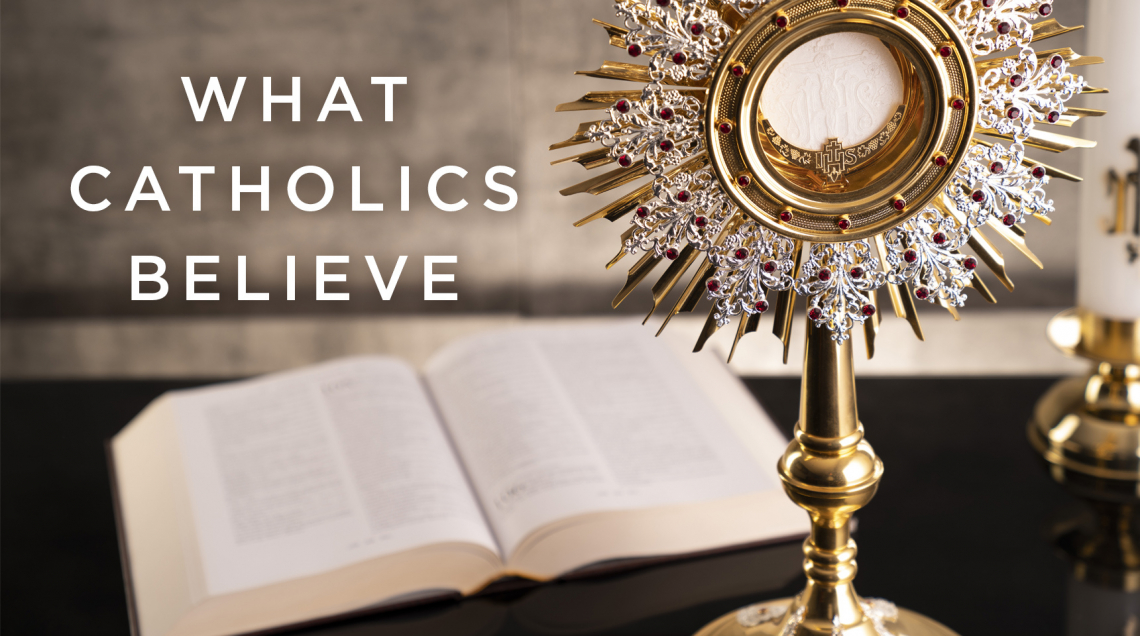The Mass: Paying Attention to what we say and do.

Over the last several issues of Harvest, I have offered readers an overview of some of the important questions related to our celebration of Mass. For example, who offers Mass? The whole Christ, head and members, Jesus and we the baptized as one body, offers the sacrifice of the Mass to the Father. When do we offer Mass with Jesus? Any day is a good day for the celebration of Mass but most especially on Sunday, the day of the Lord’s resurrection from the dead, when we are obligated to fulfill our duty to offer worship to God. What happens during Mass? During Mass, Jesus still offers to the Father the same offering of His life that He made on the cross, and He asks us to join Him in offering our lives to the Father with Him. Where should Mass be offered? Normally, Mass is offered in a church which is built and set aside exclusively for the worship of God and not for any other purpose. Finally, why do we Christians celebrate the Eucharist? We do so in obedience to a command from Jesus Himself, “Do this in memory of me.”
In the next series of columns over the coming year, I want to explain some of the individual parts of the Mass, both the words and gestures. These can become so familiar to us that we no longer take notice of their significance. In this column, I want to pay attention to the very beginning of Mass. With the priest, we say, “In the name of the Father, and of the Son, and of the Holy Spirit, Amen,” while making the sign of the cross on ourselves. Then, the priest says, “The Lord be with you,” and we answer, “And with your spirit.”
The Sign of the Cross involves words and a gesture. First, let’s examine the words. We say, “In the name of the Father, and of the Son, and of the Holy Spirit” so often that perhaps we never pay attention to it. In those words, we profess our faith in God who is simultaneously one and three. The Father is God. The Son is God. The Holy Spirit is God. But there is one God, not three. According to human logic, it is impossible for one to be three and three to be one at the same time, but that is exactly how it is with God. On our own, we never would have been able to know this. But we know because Jesus, the Son of God incarnate in human flesh, told us that He has a Father, that He is the Father’s son, and that their Spirit would be given to us. At the beginning of Mass, like at the beginning of every prayer, we make a short profession of faith in God who is a trinity of persons, one God. Christians are, by definition, those believers who confess their faith in God as revealed to the human race by Jesus Christ. We pray to God who is Father, Son, and Holy Spirit.
At the same time as we invoke the Trinity, we make the sign of the cross on ourselves. Roman Catholics use the right hand to make the sign of the cross by touching our forehead, then our chest, followed by our left shoulder and then the right shoulder. Our Orthodox brothers and sisters also make the sign of the cross when praying but touch their right shoulder first, followed by the left shoulder. In any event, both we and they are making use of an ancient gesture to express what we believe. We believe that Christ’s death on the cross makes it possible for us to live as children of God. That’s why the cross is traced on our forehead at the very beginning of our baptism. The sign of the cross is made over us whenever God’s blessing is invoked upon us by a bishop, priest, or deacon. Our whole lives as Christians are lived in the shadow of the cross where Christ’s sacrificial death brought forgiveness of sins and new life with God. By signing ourselves with the cross, we profess our faith that we belong to God and have been purchased at the price of Christ’s blood.
Then the priest says, “The Lord be with you,” and we answer, “And with your spirit.” We don’t begin Mass with just any kind of ordinary greeting but with a unique greeting specific to the worship of God. These words come from greetings that the apostle Paul used in his letter. The priest greets us not simply as one of us but as the human instrument that Christ, the unseen priest, will use to lead us all into the mystery of His Passion, death, and resurrection. The priest has received this mission by ordination by a bishop, who in turn received this mission from the Apostles, who received it from Christ. We answer, “And with your spirit.” We pray that the Lord will guide the priest in his duty to proclaim the word and offer the sacrifice of the Mass just as Jesus intended.
As you can see, a lot happens in a few words and in a few gestures at Mass! That’s what makes the Mass a never-ending source from which we can draw to sustain our prayer and our life.
Msgr. Marc B. Caron, STD, is the moderator of the curia and vicar general for the Diocese of Portland.










